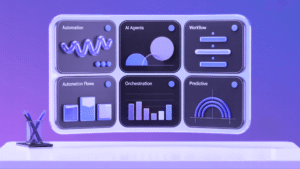PR has long been grounded in storytelling, where success was once measured by the creativity with which key messages reached audiences. While compelling narratives remain at the heart of PR, today’s landscape has transformed with the rapid advancement of data and technology.
Now, modern PR blends storytelling with data-driven insights, allowing professionals to create engaging narratives and measure their effectiveness with new precision. In this blog, we’ll explore how to build a data-driven PR strategy for 2025, one that keeps creativity front and center while using data to amplify results.
What’s shifting in the PR world today?
1. Understanding your audiences on a deeper level
Media relations were once the cornerstone of PR, but today, focusing solely on media placements is no longer enough. True impact comes from deeply understanding your audience—their motivations, needs, and stories. Knowing your audience’s stories helps you shape campaigns that genuinely connect.
Consider Mattel’s Barbie campaign. Its success wasn’t just due to Instagram-worthy visuals and iconic Dreamhouses; data played a critical role. By tracking social media conversations and analyzing real-time feedback, the campaign was fine-tuned to maximize engagement. The result? Not only did it create massive buzz, but it also drove measurable business impact, adding billions to global revenue.
2. Data as PR’s greatest asset
Like many other industries, PR has its share of traditional practices. One long-held belief is that the best time to send a press release is Tuesday at 10 AM.
However, real-world data often tells a different story. For instance, AxiomQ’s research reveals that technical announcements have 20.5% lower open rates between 6 AM and 10 AM compared to later in the day when professionals are more engaged.
Meanwhile, consumer content performs better when aligned with specific platform behaviors. Data like this allows PR teams to optimize their timing and approach, tailoring their strategies to actual audience habits.
3. Knowing what to measure and how to measure it
Tracking metrics for the sake of numbers can be misleading. To truly understand your campaign’s impact, it’s essential to focus on metrics that reveal something deeper:
- Share of voice: Who’s talking about you, and how much of the conversation are you owning compared to your competitors?
- Message penetration: Is your story getting picked up and spread in the communities that matter most to your business?
- Business impact: How are PR efforts moving the needle on revenue, brand perception, or customer behavior?
The best PR teams focus on these metrics to move beyond surface-level success, creating strategies that deliver real, measurable value.
ALSO READ: Not Every Number Counts; Select The Data That Matters
How to create a data-driven PR strategy in 2025
With a clear view of today’s PR landscape, it’s time to start using data to guide your strategy. Here’s how to build a data-driven approach that meets today’s standards:
Start with audience reality
Before creating content, invest time in understanding your audience. Ask questions like: Where are conversations happening? Who are the trusted voices? What topics spark genuine interest? Mapping out this ecosystem gives you a clear picture of where to focus.
Measure what matters
Tracking numbers alone isn’t enough. Focus on metrics that reveal meaningful insights:
- Story evolution: How is your message spreading? Are key points being amplified or distorted?
- Resonance patterns: What’s sticking with your audience, and what’s falling flat?
- Conversion triggers: At what point do your stories inspire action or influence behavior?
When you measure the things that directly connect PR efforts to business outcomes, you can start delivering real, strategic value.
Test, learn, and adapt
Even the best data can’t predict everything. Effective PR teams constantly test messages, timing, and channels, adjusting as data insights unfold. Use data to guide decisions but remain flexible and ready to pivot if needed.
Looking ahead
Data has become essential in PR, enhancing creativity by making it more targeted and effective. While storytelling remains central, data provides insights into audience interests and message impact, allowing PR teams to craft stories that resonate and deliver measurable results.
Want to learn more about tracking your PR results? Let’s talk about how Media Meter can help your team work smarter. Contact us today for inquiries and view more of our sample reports.
-
Richelle is a writer, researcher, and a content marketing specialist at Media Meter Inc., turning complex media data into compelling narratives. With a background in research and data analytics, she combines attention to detail with a strategic approach to create content that resonates and drives results, helping brands forge meaningful connections with their audiences.
View all posts




